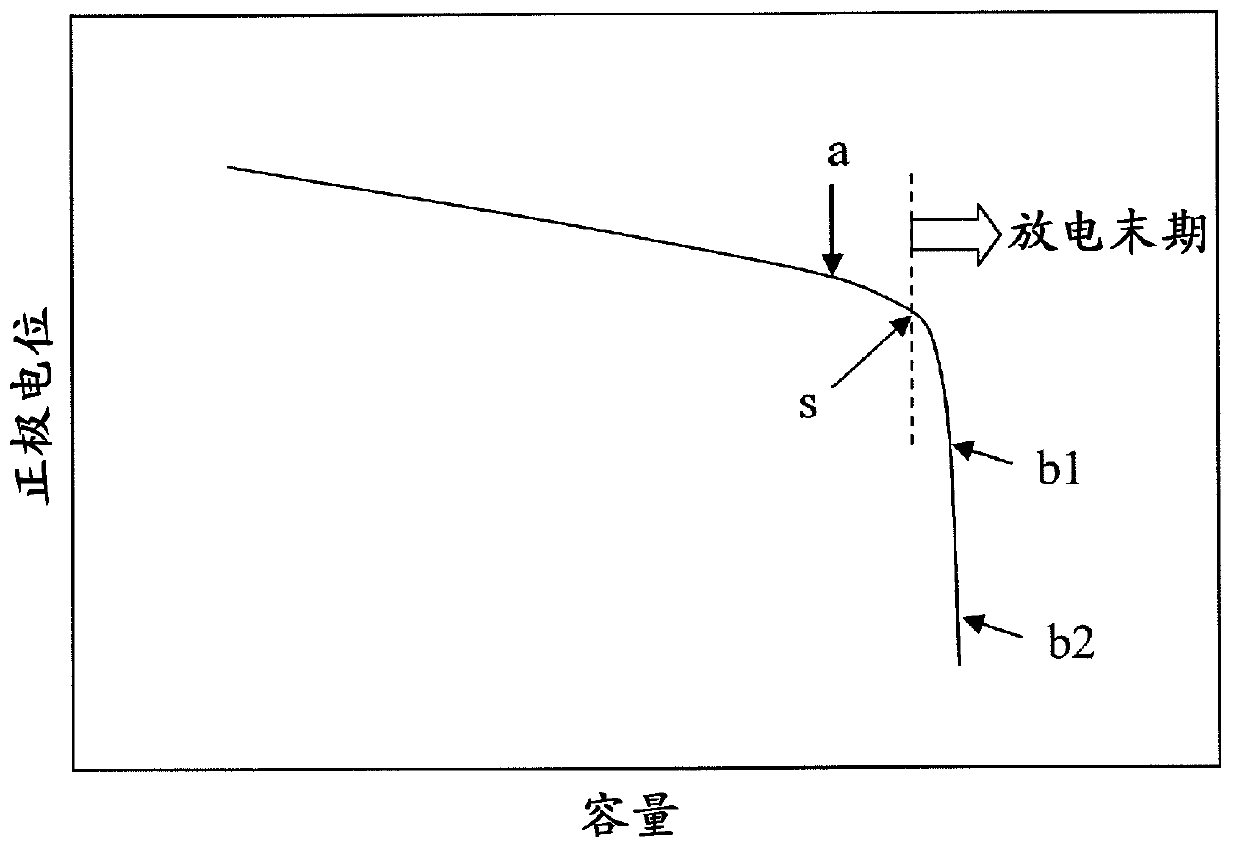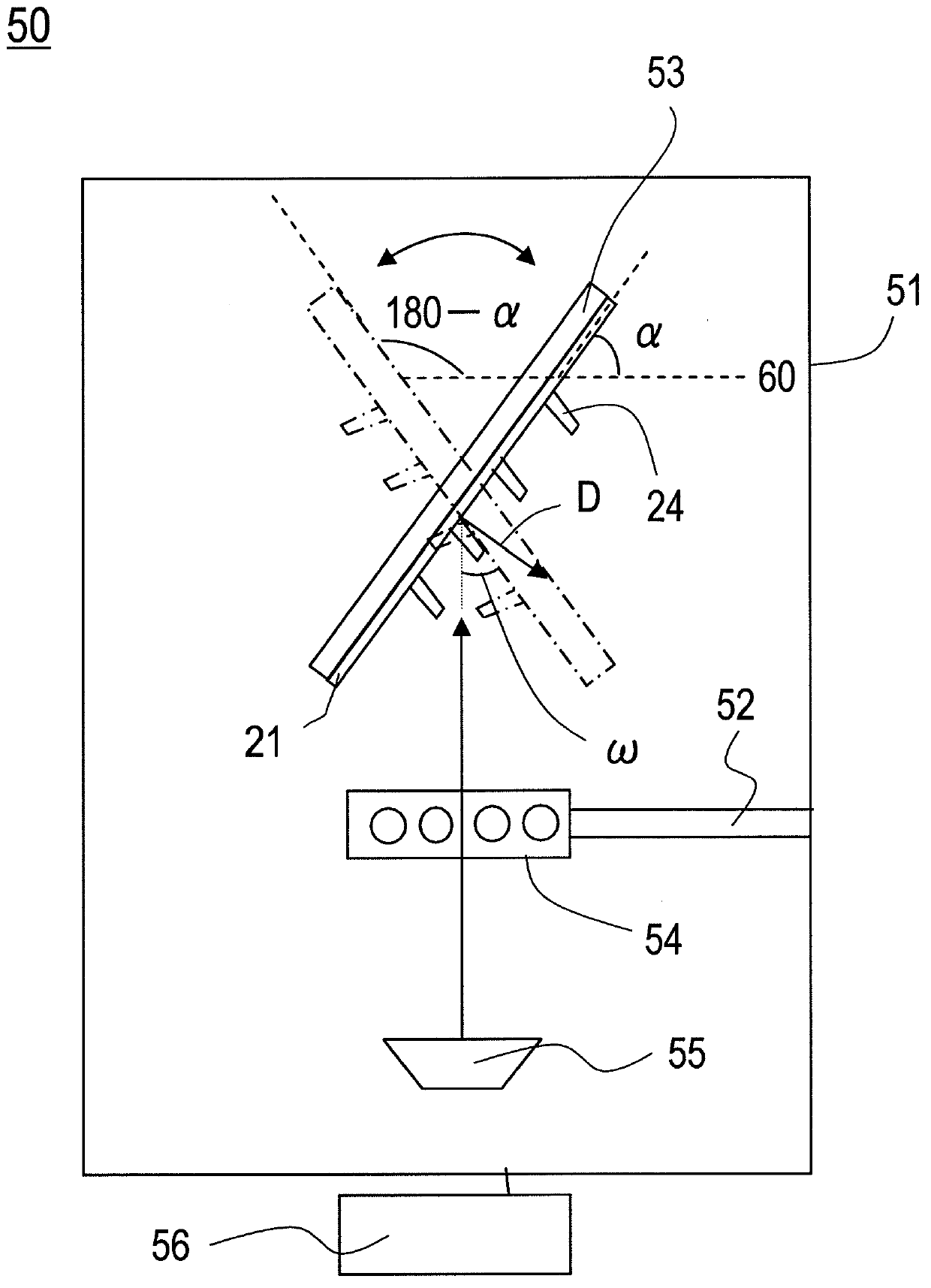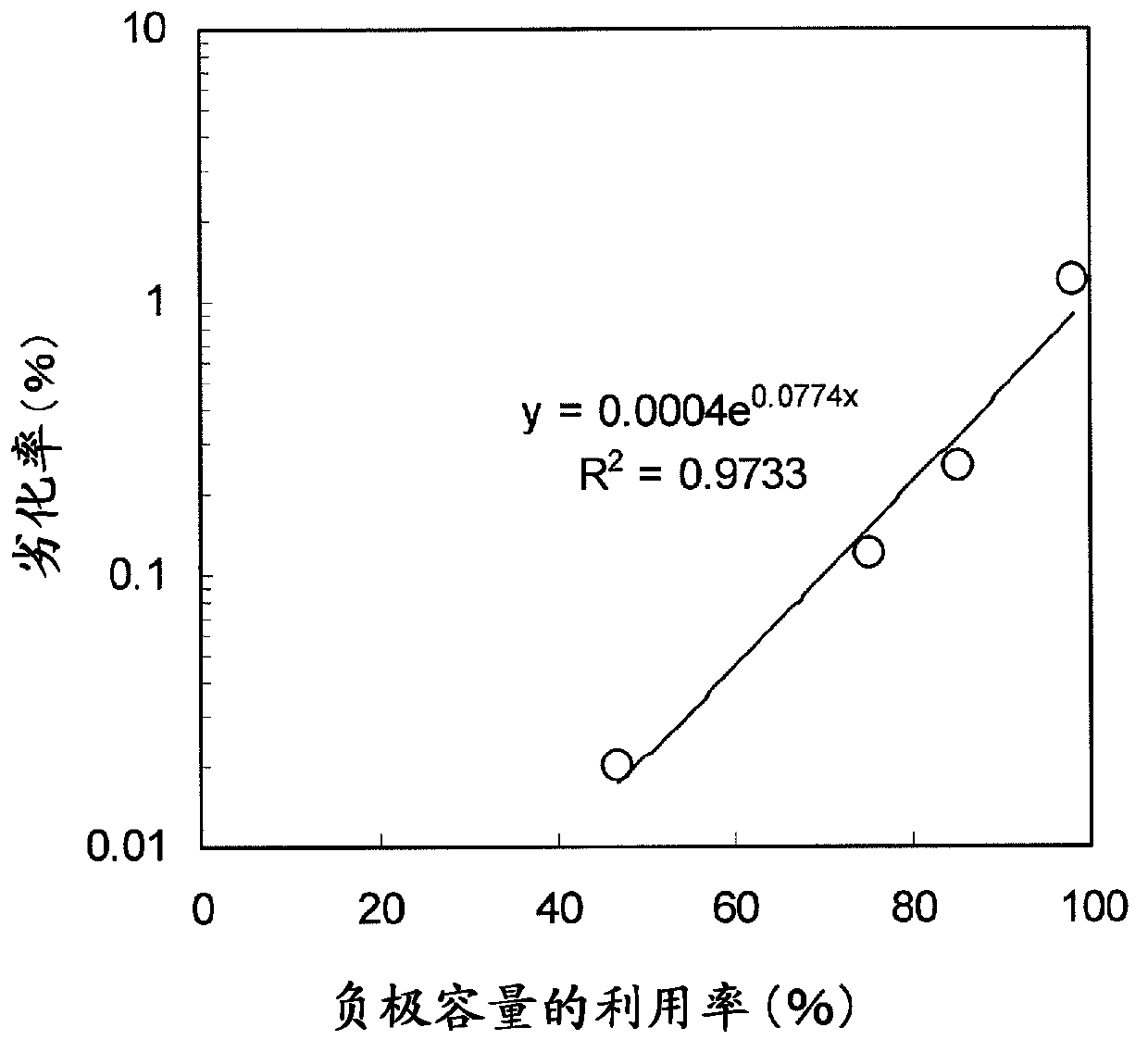Method for charging and discharging lithium secondary battery, and system for charging and discharging lithium secondary battery
A lithium secondary battery, charging and discharging technology, applied in the field of charging and discharging systems, can solve the problem of inability to achieve high-capacity cycle life, etc., and achieve the effects of preventing the deterioration of the negative electrode and suppressing the reduction of the battery capacity
- Summary
- Abstract
- Description
- Claims
- Application Information
AI Technical Summary
Problems solved by technology
Method used
Image
Examples
no. 1 Embodiment approach )
[0115] Hereinafter, a first embodiment of the present invention will be described. This embodiment is a lithium secondary battery including a positive electrode containing a positive electrode active material, a negative electrode containing a negative electrode active material capable of storing and releasing lithium, a separator arranged between the positive electrode and the negative electrode, and an electrolyte having lithium ion conductivity. charging and discharging method.
[0116] The positive electrode active material in this embodiment is a lithium-containing transition metal oxide capable of storing and releasing lithium. For example, a composite metal oxide of at least one transition metal selected from cobalt, manganese, nickel, chromium, iron, and vanadium and lithium may be used.
[0117] As the lithium-containing transition metal oxide, a nickel-based lithium-containing composite oxide that is a composite metal oxide of nickel and lithium is preferably used. ...
Embodiment 1
[0197] Lithium secondary batteries in which a nickel-based lithium-containing composite oxide was used as a positive electrode active material and graphite was used as a negative electrode active material were evaluated. Describe its methods and results.
[0198] (1-1) Production of positive electrode active materials A, B, and C
[0199] As the positive electrode active material, three kinds of nickel-based lithium-containing composite oxides with different compositions were carried out: with LiNi 0.815 co 0.15 Al 0.035 o 2 The positive electrode active material A of the composition represented by LiNi 0.76 co 0.14 Al 0.10 o 2 The positive electrode active material B with the composition represented by LiNi 1 / 3 mn 1 / 3 co 1 / 3 o 2 Production of positive electrode active material C with the indicated composition.
[0200] The method for producing the positive electrode active material A will be described below.
[0201] First, an aqueous solution containing nickel s...
Embodiment 2
[0272] (production of positive electrode)
[0273] In the examples, the same positive electrode as that using the positive electrode active material A or the positive electrode active material C in Example 1 was produced.
[0274] In the positive electrode using the positive electrode active material A, the thickness of the positive electrode, that is, the total thickness of the current collector and the positive electrode active material layer is 72 μm, and the positive electrode capacity per unit area is 3.86 mAh / cm 2 . Furthermore, the capacity of the positive electrode is to use lithium metal as the negative electrode, and the charging current value: 0.1mA / cm 2 , Termination voltage: 4.25V, discharge current value: 0.1mA / cm 2 , Termination voltage: the capacity of the case of constant current charge and discharge under the condition of 3.0V.
[0275] In the positive electrode using the positive electrode active material C, the thickness of the positive electrode, that i...
PUM
| Property | Measurement | Unit |
|---|---|---|
| thickness | aaaaa | aaaaa |
| thickness | aaaaa | aaaaa |
| thickness | aaaaa | aaaaa |
Abstract
Description
Claims
Application Information
 Login to View More
Login to View More - R&D
- Intellectual Property
- Life Sciences
- Materials
- Tech Scout
- Unparalleled Data Quality
- Higher Quality Content
- 60% Fewer Hallucinations
Browse by: Latest US Patents, China's latest patents, Technical Efficacy Thesaurus, Application Domain, Technology Topic, Popular Technical Reports.
© 2025 PatSnap. All rights reserved.Legal|Privacy policy|Modern Slavery Act Transparency Statement|Sitemap|About US| Contact US: help@patsnap.com



